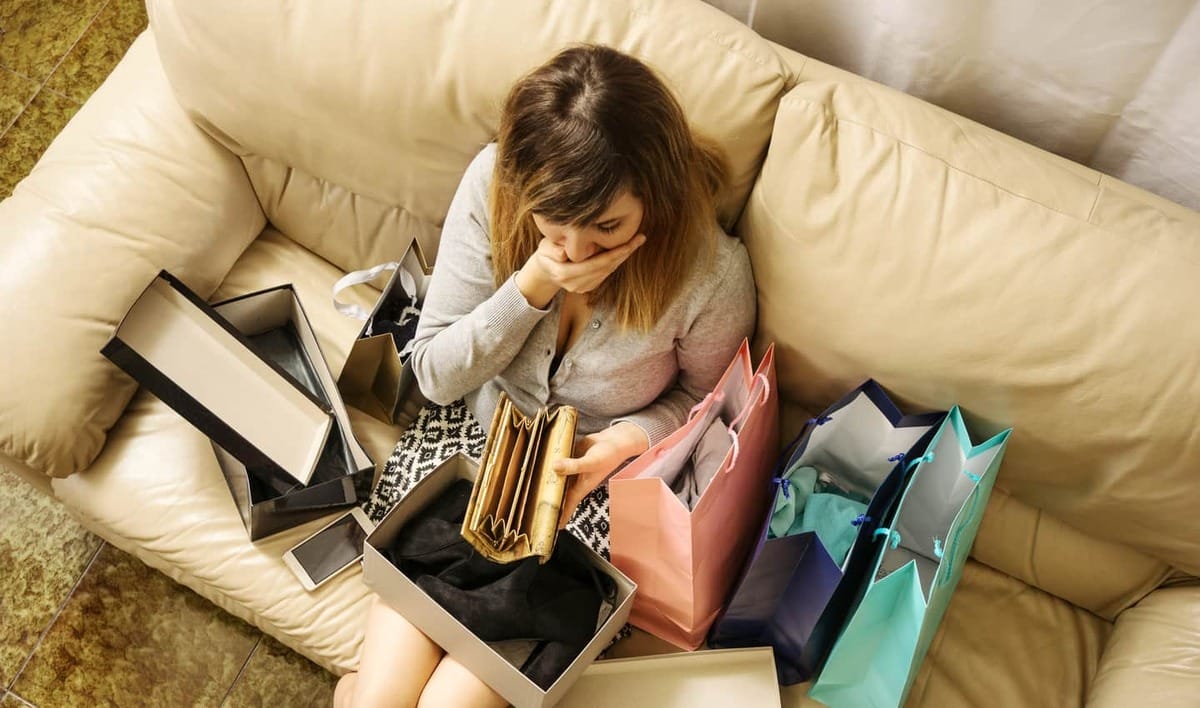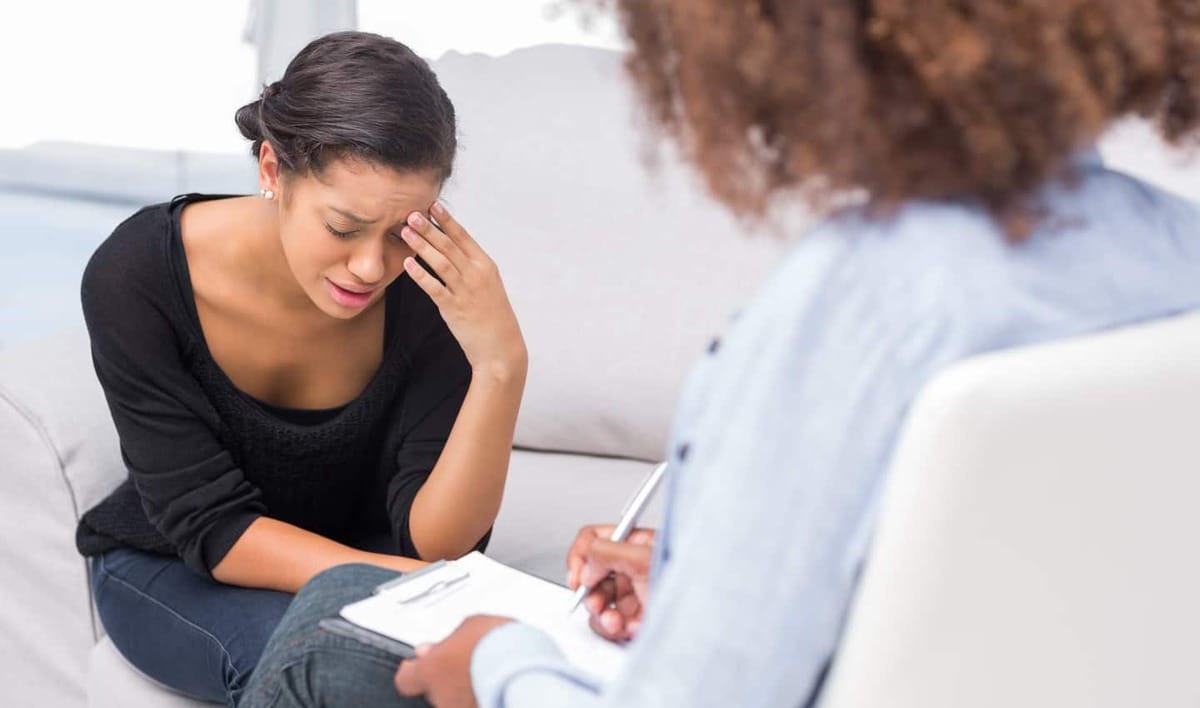- Health Is Wealth
- Posts
- 5 Signs You Might Have a Shopping Addiction
5 Signs You Might Have a Shopping Addiction
Most of us get carried away with our spending from time to time.
Maybe you sometimes buy an extra item at the grocery store or indulge in some retail therapy. But there’s a fine line between shopping for fun and having a full-blown shopping addiction. Labeling yourself or someone else as a shopping addict may sound harsh, but it’s a serious condition. In fact, at least 6% of the U.S. population is believed to have a shopping addiction.[1]
On the surface, shopping regularly seems like a harmless activity. However, it can transition into an addiction if you start using aimless purchases to fill an emotional or social void.
If you think you or someone you love might have a shopping addiction, it’s important to know the signs and what to do to recover from it.
Impulsive vs. Compulsive Shopping
When it comes to making purchases, some people use the terms impulsive and compulsive interchangeably. However, they actually mean two different things.
According to Carrie Rattle, Compulsive Shopping Specialist and CEO and founder of Behavioral Cents explains, the “primary difference is that with compulsive shopping, the urge to buy comes from within. The shopper may have an emotion they can’t deal with or a need to fill a void. Impulsive shopping is triggered by external forces.”
Compulsive shopping
Rattle says that shopping addictions are compulsive but often referred to as the ‘smiled upon’ addiction.
“Alcoholics need help, a person on drugs [may] end up killing themselves one day, but if you have a shopping addiction, it’s somehow the lesser evil because shopping supports the economy,” she says.
Like other addictions, though, compulsive shopping is just as problematic. It can have long-term effects on someone’s work, finances, relationships, and mental health.
Impulsive shopping
Rattle defines impulsive shopping as the type of shopping that many of us do from day to day. For example, grabbing the latest issue of a magazine while you’re waiting in the checkout line at the grocery store or buying the daily deal from Amazon would be classified as impulsive shopping
“There are times when you may be triggered by a sale or discount and run out to the store to grab that item, thus acting on the impulse or emotion you feel,” she says.
In other words, if you’re shopping and buy something that puts you a little over budget, it may not have a significant effect on your debt level, social life, or relationships with others.
How to Spot a Shopping Addiction

Not everyone who is a compulsive shopper is a shopping addict. However, it’s important to know the signs so you can identify when regular shopping becomes a serious problem.
1. You can’t stop buying things despite being in debt
If you’ve ever been in debt, going shopping may have been the last thing on your mind — unless you have a shopping addiction.
Rattle says that clients who come to see her are often at their lowest points financially due to compulsive shopping. Their credit cards are maxed out and they can’t refinance or get new cards so they feel “boxed in.”
A person with a shopping addiction may find themselves working extremely hard to pay off their debts. Or they may pick up overtime or tack on a side hustle so they have more money to keep buying things. The additional income is generally used to fuel their shopping rather than other financial obligations.
2. You don’t wear or use everything you’ve bought
If you’re buying things you don’t use or wear, and you already have an excessive amount of items, that’s another sign you might have a shopping addiction.
Adding onto the pile feeds the addiction, and it desensitizes you when you buy new things.
Some people spend years shopping and collecting items that they know they’re not going to use or need. Still, the idea of making a purchase and having new things provides a sense of comfort.
3. You shop and buy based primarily on emotions
Do you buy things because you need them or are your purchases based on the emotions you feel or the emotions you want to feel?
Dr. April Benson from Shopaholic No More, is a psychologist who works with recovering shopaholics. She recommends that people stop and ask themselves why they’re really shopping and what emotional needs spending helps soothe.
“It’s important to determine whether it’s love or affection that you need or the need for autonomy and the feeling of belonging,” Dr. Benson says.
While someone may buy more stuff to feel happier or overcome an emotion like anger or sorrow, Dr. Benson explained, the positive rush you feel when you buy new things often wears off after a while.
It’s easy to get emotions confused with impulses that can arise and disappear quickly. Impulse purchases may seem to provide short-term satisfaction and positive emotions; but again, this feeling doesn’t last, leaving a person to focus on their next shopping spree to serve as a pick-me-up.
4. You experience a rush of adrenaline
Most of us occasionally experience the rush that comes from shopping and buying new things. However, rather than feeling excited to use a new gadget or read a new book, compulsive shoppers feel an emotionally soothing high when they buy new items. The purchases are to fill a need or void rather than for practical purposes.
If you’re dependent on your desire to shop, you may feel anxious or down on the days when you don’t shop. This is a clear indication that you may be dealing with an addiction.
5. Your relationships start to suffer
During her time as a Compulsive Shopping Specialist, Rattle noticed the toll a shopping addiction can have on relationships.
“It’s common for someone with a shopping addiction to notice their work and relationships suffer as social interaction may decrease,” she says. “If you’re at work, you may put off projects just to go shop on your lunch break or spend too much time working to pay off your credit card bills that your friendships dissolve.”
Signs your shopping is affecting your life include feeling guilty about the time or money spent shopping, working long hours to pay bills and leaving no time for friends or loved ones, and continuing to buy things you don’t use at the expense of other financial or familial obligations.
Another indication is that you feel the need to hide your purchases from loved ones or are nervous someone will catch you shopping. Whatever your reason for hiding purchases — guilt, fear, shame, avoidance — this paves the way for issues like financial infidelity to arise.
In other words, if your compulsive shopping is affecting your job, relationships, ability to socialize, and prevents you from performing normal life obligations, there’s a good chance you have a shopping addiction.
How to Stop a Shopping Addiction

If you feel you have a shopping addiction, there are steps you can take to get better.
Inventory your purchases
It might be difficult at first, but you’ll need to take stock of what you’ve bought. Go through your closet, garage, or basement for items that still have tags or are still in boxes. Make a list or separate out those items to see what you can sell or donate. You can even use the money you earn to pay off any debt you accumulated as a result of your addiction.
Reviewing what you bought can help you become more conscious of what to purchase in the future. You will also want to identify the emotional or social triggers, including friends or family, that caused you to buy those things in the first place so that you can avoid those situations going forward.
Review your finances
Rattle mentions how many shopaholics suffer from “vagueness.” This means they may shop in a fog and don’t recall what they’re buying and how often they’re shopping. If this sounds like your behavior, try tracking your spending more carefully. You can do this through a spreadsheet, a notebook, or even a budgeting app on your phone.
It’s also important to see how many unnecessary or unplanned purchases you make each week and each month. To do this, pull up your bank statements from the past three to six months, or a year, if you can.
Go line by line and highlight each purchase you don’t remember making or ones that were above a certain spending limit. The more aware you become, the more you can start assessing your behavior and how much it costs.
You can also make some behavioral changes like taking credit cards out of your wallet or switching to a cash-only system. Delete bookmarks for your favorite online stores, unsubscribe from daily deal emails, or change how you walk or drive to resist window shopping at local boutiques.
Get help
Like any addiction, finding help is key to getting better. One place to start is with Debtors Anonymous meetings. Sometimes it’s easier to talk with strangers than friends or family.
If it scares or intimidates you to talk about your problem with a group of people, you can use sites like Dr. April Benson’s Shopaholic No More which provides helpful tools and resources to overcome your shopping addiction. There are videos, self-help tutorials, books, and journals, as well as links to therapists in your area. Some of these resources are free, but there are some you need to pay for, so make sure that you note that when you’re looking.
You can also get individual treatment with a licensed professional like Carrie Rattle or Dr. Benson.
You Can Overcome a Shopping Addiction
Although it may not seem like it when you’re in the thick of an addiction, it is possible to overcome it. If your behavior matches some of the warning signs, it might be time to take a step back and examine your shopping habits. And if that examination makes it clear that you have a shopping addiction, consider getting help before things get out of control.
By changing some habits, identifying triggers, and replacing them with healthier alternatives, you can overcome a shopping addiction. The journey might not be easy, but the benefits are well worth the work.
The post 5 Signs You Might Have a Shopping Addiction appeared first on DollarSprout.